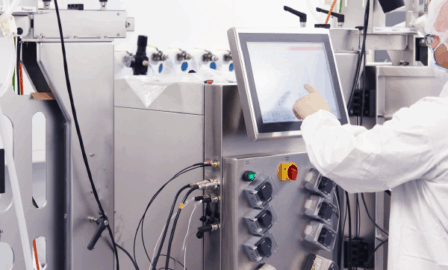Reasons to Implement Lean Six Sigma for Pharma & Biotech
Many pharma and biotech businesses implement lean Six Sigma (LSS) practices to lower their operational costs and provide high quality products to customers. Lean Six Sigma also helps firms use resources conservatively, address quality and regulatory compliance, and boost operational efficiency. Using data collection and root cause analysis, combining traditional lean methodology with Six Sigma tools can provide significant benefits to a company.
In order to limit the number of unproductive steps in an operational process, companies often implement lean practices. They may use lean tools such as 5s to keep workspaces orderly, Value Stream Mapping to identify wastes and waste sources, Gemba to expose process defects, and Kanban to help manage inventory levels. Additionally, companies may use the Design, Measure, Analyze, Improve, Control (DMAIC) framework defined in Six Sigma, which helps achieve low-defect continuous processes. The Define step requires analysis of goals and deliverables with set target KPIs and timeframes. The Measure step collects quantitative and qualitative data from individuals participating in the business processes. The Analyze step draws conclusions from variable and critical quality attributes understood to produce causation, which are then used to set up new actions and procedures in the Improve step. This can involve process validation, equipment modification, and workforce adoption effectiveness, evolving with constant tweaking. Finally, the Control step helps ensure that the new processes are sustainable and reproducible.
The complementary nature of lean manufacturing process and Six Sigma principles makes improvements even more effective when used in integrated design. These concepts help a company place focus on the customer, data, and efficiency of results. LSS can be used in both continuous and discrete processes, and it can even track the flow of knowledge. In terms of biotech and pharma specifically, LSS ties in well with the FDA’s PAT initiative. And, data-driven techniques can have major benefits in reducing the number of experiments and prototypes required, in addition to the most important LSS benefits: increased process speed and improved product quality.
Increasing Speed
Growth in the pharma industry is much lower today than it has been historically, causing companies to focus on R&D productivity. However, achieving low development costs per cycle time can help firms see increased growth, combatting the fact that 90% of all drugs in development will fail before they can go to market. Using LSS, scientific processes can be paired with statistical methods to also increase the cycle speed. Lean processes do this most effectively, by picking out the most inefficient, wasteful steps.
Mapping the value stream to prioritize improvement can help identify valuable and non-valuable areas, which can then be adjusted to fit the needs of the goals. Lean processes also lower cycle times, using the fewest resources possible to improve and accelerate the process while reducing waste in terms of defects, malfunctions, and errors. Implementing LSS can reduce cycle times down to 2 to 3 weeks, which also helps increase inventory turnover. DJO Global was able to adjust their inventory from 84 to 14 days, as well as decreasing lead times. Agilent Technologies also was able to reduce their inventory levels by $16 million, in addition to increasing productivity by 21% year over year.
Faster cycle times combined with process mapping can help pharma and biotech companies in reaching their goals of being first to market and delivering quickly. When used in an R&D context, LSS can significantly lower the cost of developing products for research and clinical applications, maximizing output and driving innovation. This overall increase in productivity helps pharma and biotech businesses create faster and more effective products.
Improving Quality
Six Sigma is most effective in reducing product error. This is particularly helpful in pharma and biotech R&D, since biological systems frequently exhibit variations that need to be considered and quantified in drug discovery and development. Small changes in input or product use, resulting from either common cause variation or abnormal special cause variation, can result in major output variations. LSS can adjust for product defects and use case variations by integrating statistically based methods and tools to highlight inefficiencies and achieve zero error. Increasing correct usage can be supported by a product designed in consideration of processes used to understand variation and its effects.
Six Sigma can highlight issues with critical quality attributes in a pharma or biotech product. This could include varying weight, inefficient tech transfers, or other process factors ranging from product development through manufacturing. Value stream mapping can also be used to lower operational costs, especially by taking a detailed look at formulation and quality – two particularly well-suited areas for LSS, since 90% of time operating in these areas is wastefully spent on noncore activities.
Six Sigma is actually defined as striving to achieve bottom line breakthrough change with defect levels of 3.4 PPM and a 70% or higher improvement rate. This concept aligns with FDA quality by design (QbD) initiatives encouraging design space validation, cost-effective processes, adjustments to variability factors, and process optimization and control – all with the purpose of integrating quality at the source. Lowering defects to achieve a zero-error product creates a high-quality drug with benefits for both the company and the customer.
Implementing Lean Six Sigma
As industry competition continues to increase, along with regulation and cost of R&D, pharma and biotech companies must adapt by lowering spend and raising the bar for quality. Merck and Johnson & Johnson are two pharma companies that have previously implemented LSS practices, acknowledging that inefficiencies must be addressed to reduce threats from outsourcing, competition, and depleted pipelines. Productivity lag and a need for process and technology adoption position pharma and biotech businesses to reap major benefits from LSS, including higher throughput, increased capacity, lower rate of error – overall improving productivity, efficiency and resource utilization.
Challenges
Gaining company-wide buy-in and excitement for new LSS initiatives can be difficult. Lack of organizational understanding that LSS should be changing performance, and that it is not just a quality improvement or training, can hinder the potential impact of initiatives. LSS in pharma and biotech can also be complex and require flexibility and interoperability in business activities. However, the most significant challenge is successful integration of LSS principles into daily operations, which should focus first on short-term Rapid Improvement Events before evolving to long-term organic improvement. LSS initiatives can also overemphasize statistics in some cases, and they should instead focus on relevant business needs and solutions in context. Comparing success rates from LSS changes in pharma and biotech companies to other industries should also be avoided because of the variability in the ease of incremental change, correlated to the regulatory environment.
Learn more about our Life Sciences Consulting services
Achieving Success
To successfully implement LSS, businesses must work beyond workflow analysis and use of algorithms to shift the company mindset. This can be achieved by appointing people who best understand the company’s customers and how to meet their expectations as change agents. LSS should focus on process visualization to build a framework that can meet business goals with less arbitrary decision making, integrating a culture change. Empowering employees through involvement in an LSS shift can help an organization eliminate error and highlight the importance of certain customer values. Support from leadership, consistent communication, connecting activities and end-goals to KPIs can help pharma and biotech companies successfully implement LSS.
In identifying fast failures and amplifying productive work, Lean Six Sigma can work well with pharma and biotech operations, especially in R&D. LSS can be used in discovery processes, clinical trials, PAT application, and throughout the development pipeline, which magnifies both upstream and downstream processes to create improvement in multiple areas for many parties involved. Changes made using LSS methods can benefit end-users, including patients, doctors, healthcare providers, pharmacists, and patients by creating value through quality, service and cost.
Subscribe to Clarkston's Insights
Contributions by Courtney Loughran.



